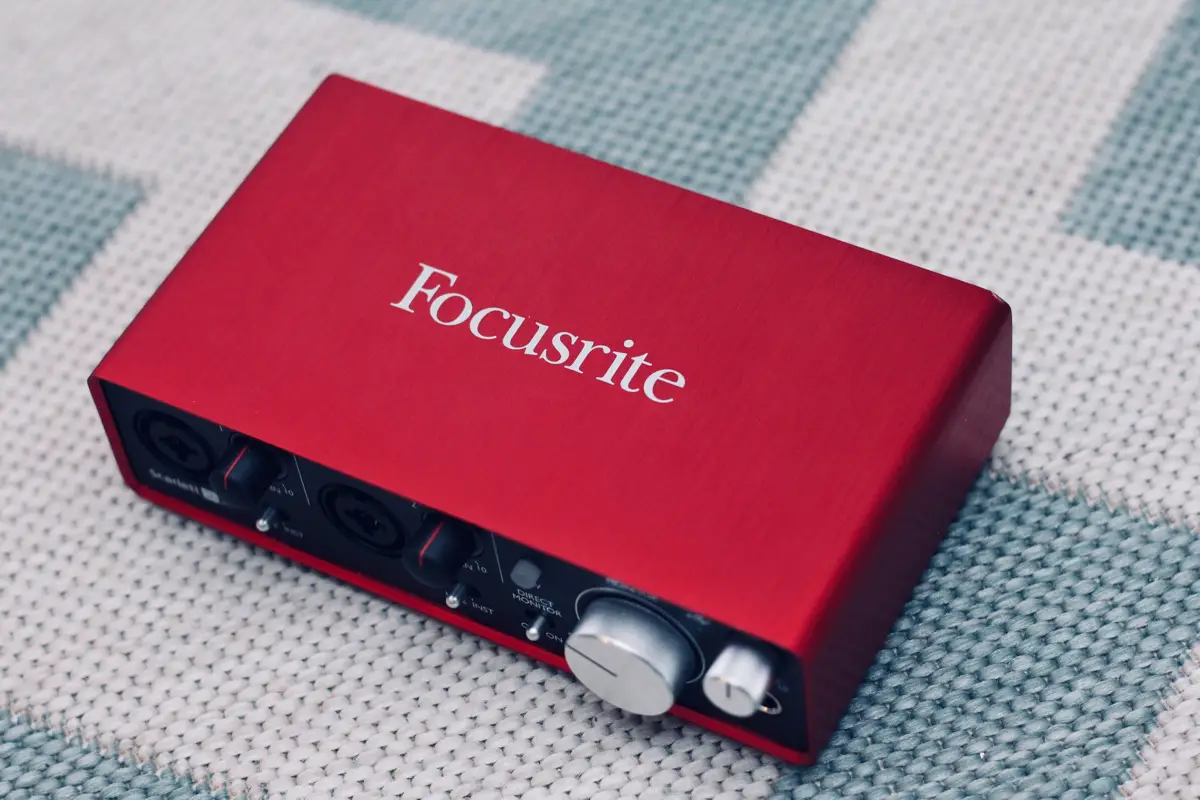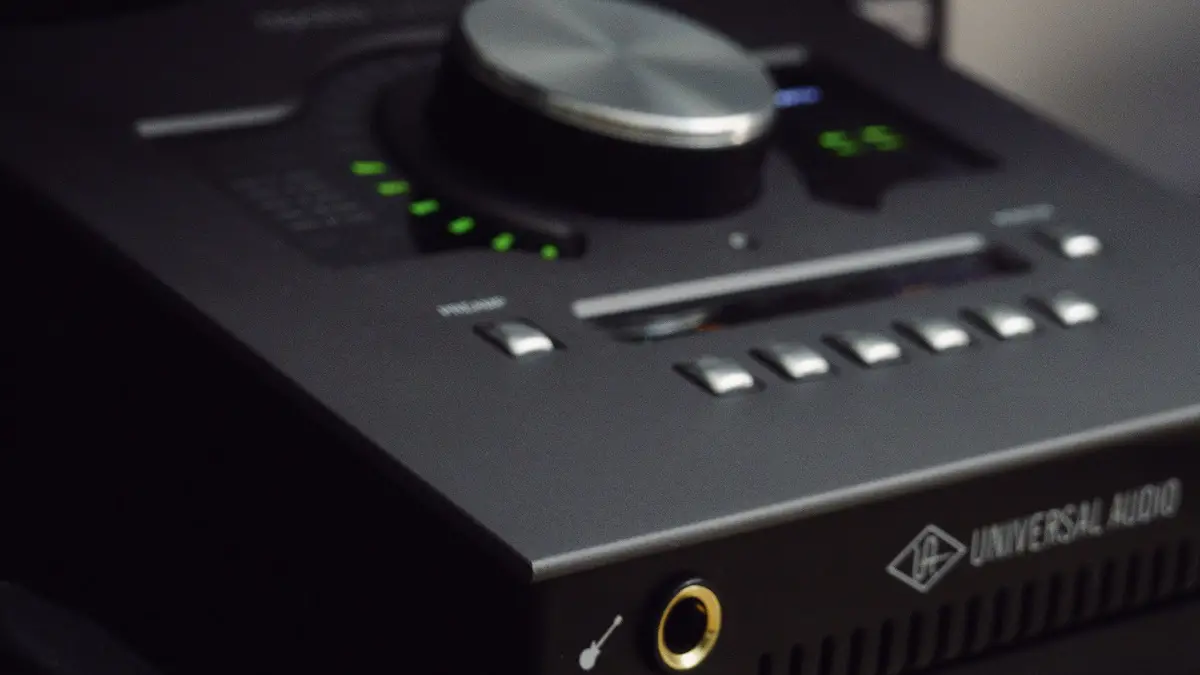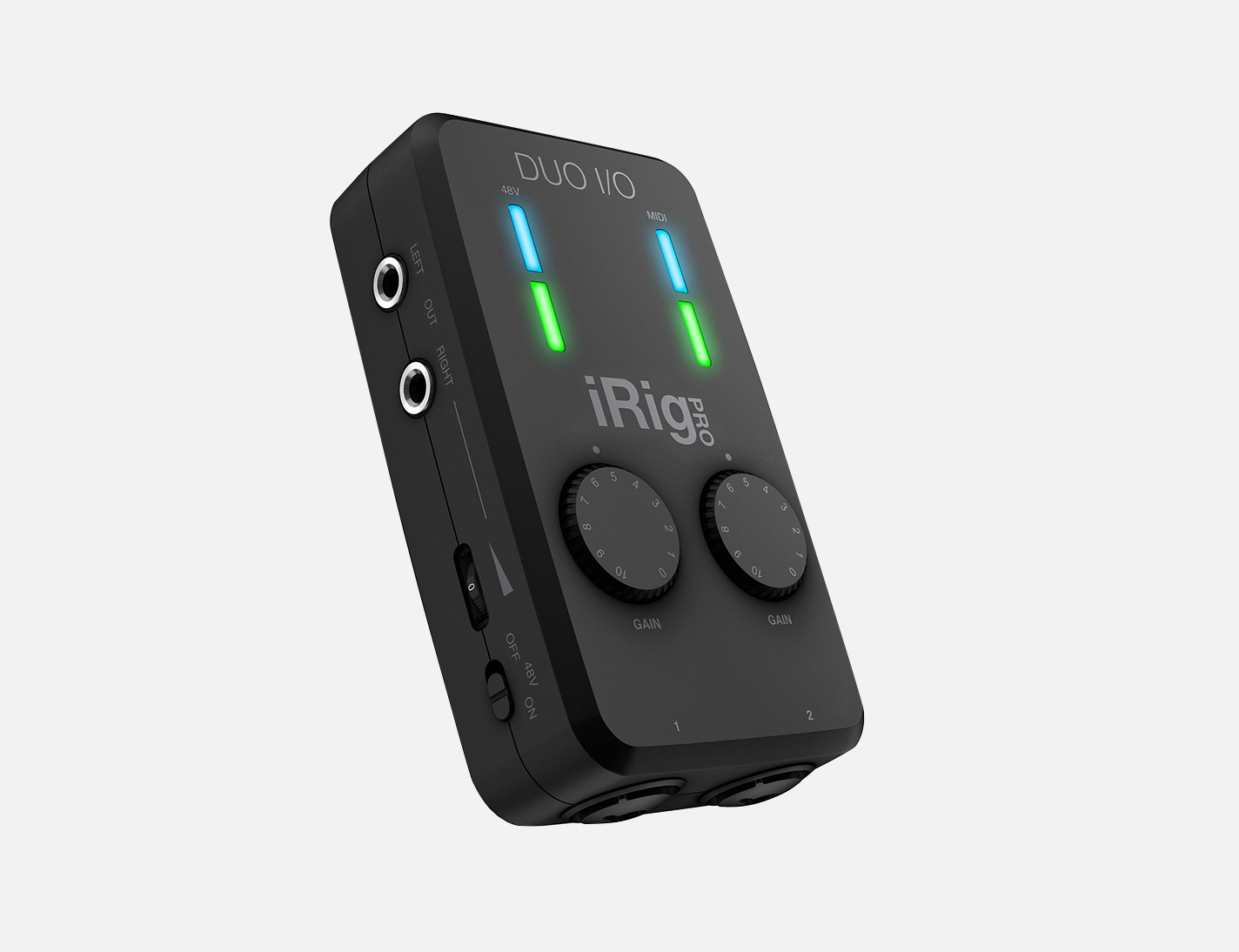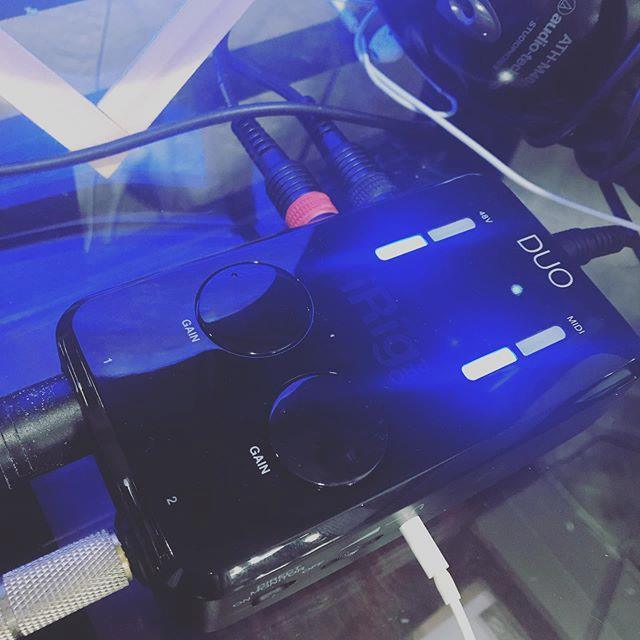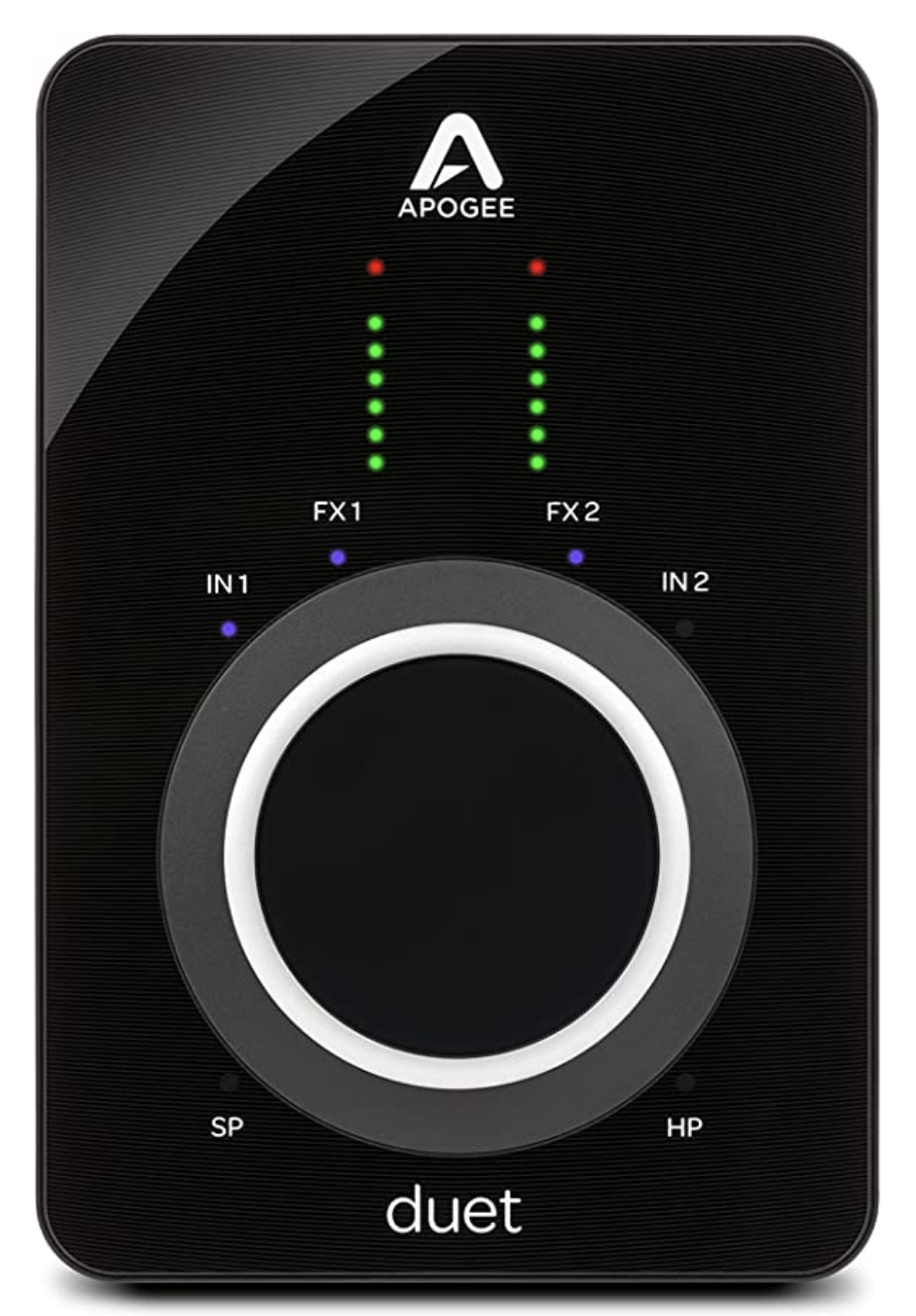Do audio interfaces actually make a difference in sound quality? Is it worth it to upgrade to a better interface?
Audio interfaces do impact the quality of a recording. The quality of an audio interface is determined by the quality of converters and preamps built-in to the interface. Cheap interfaces can capture clear audio, but they don't provide the warmth, depth, and high resolution audio that higher-end interfaces provide.
That being said, does this mean you can't product pro-level recordings without a pro-level interface?
Not at all!
However, I would say an interface would be the first piece of equipment I would upgrade to pro-level, before microphones, monitors, or anything else.
Let's unpack what makes for a great audio interface, how to know when to upgrade, and which are the best.
what does an audio interface do?
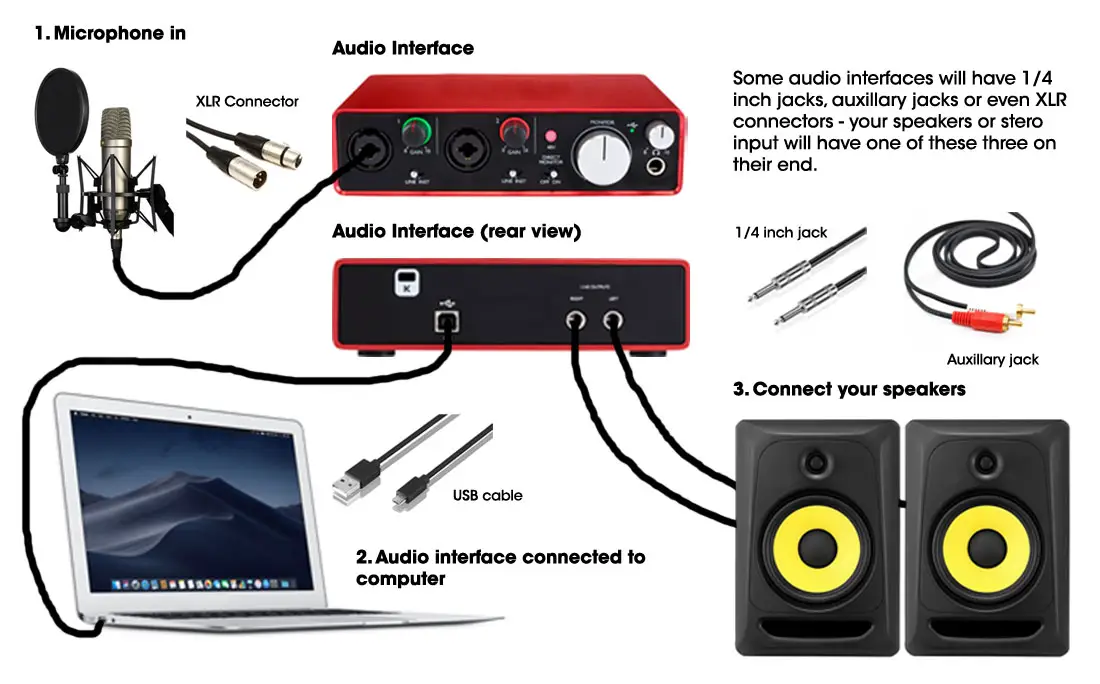
Audio interfaces convert analog electrical signals from a microphone or instrument into a digital format that your computer and software can recognize. An interface also routes audio from your computer out to your headphones or speakers.
In other words, an audio interface is what allows for all of your other gear (instruments, mics, monitors, etc.) to communicate with your computer and DAW.
Interfaces typically connect to your computer via USB cable, though some use Thunderbolt, Firewire, or even ethernet.
Interfaces can range in price from under $100 to several thousand dollars. Today, even the most affordable interfaces sound great, and can be used to produce professional-quality audio.
So if even cheap interfaces can be good, then what makes an audio interface good or bad?
what makes an audio interface good?
There are several different elements that factor into whether or not an audio interface is good for you and your situation.
1. Number of I/O
First, is the number of I/Os (Inputs and outputs). Does it have the number you need?
Since I'm never recording more than two microphones or instruments at a time, I'm good with an interface with just two I/Os.
However, if you are recording a band, then you will need an interface with many more I/Os.
2. Durability
How well an interface is built is also important. You want to make sure your interface will be reliable, and won't break on you.
Interfaces with metal chassis and knobs are going to be more durable than those built out of plastic.
3. Sound Quality
Of course, most important, is sound quality.
The sound quality of an interface is going to come down to the quality of the preamps and converter that it uses.
Preamps will affect things like:
- The overall sound quality
- Tonal color and depth
- Amount of warmth
Preamplifiers (preamps) increase the gain of low level signals until they meet the "standard" operating level of your recording gear. Without a preamp, the recording level of your microphones would be just too low to do anything with.
Most microphone signals operate at around 30-60db below what is required, which is why a preamp is needed to boost the recording.
Preamps also generate noise, so you want to get one with a low signal-to-noise ratio of at least -80dB.
The interface I use, the iRig Pro Duo, has a level of about -104dB.
The second thing your interface will have that impacts the sound quality is the converter, which converts your analog signal to digital so that it can be read and understood by your computer.
The better quality your converter and preamps are, the better quality interface you have, and the better your audio will sound.
What Is The Difference Between a cheap and expensive audio interface?
Cheaper interfaces are going to provide you with more of the natural tone of your voice or instrument/amp, whereas more expensive interfaces will add additional warmth, depth, and audio resolution for a higher-quality recording.
Another major difference is the number of inputs and outputs the interface has. Most cheaper, simple interfaces give you one or two inputs for recording instruments, which will usually allow for both XLR and 1/4″ inputs. And two outputs for your studio monitors (this is typically for the left and right output monitors).
Interfaces that are more advanced (and expensive) will come with more outputs and other capabilities.
Lastly, there are also differences in things like…
- Dynamic range
- Frequency response
- Whether it uses tubes or transformers
- Quality of the converters
These features may not only vary between cheap and expensive interfaces but also by the manufacturer.
Should I Upgrade my audio interface?
So, because a higher-quality audio interface produces higher-quality recordings and audio, does this mean you should upgrade ASAP if you want pro-level productions?
Not necessarily.
This is because it's entirely possible to create great-sounding music from budget-level interfaces.
If you're not happy with how your productions sound, upgrading the interface isn't going to change that.
Instead, invest more time in learning the tools you already have, even if they are just stock plugins and a cheap audio interface.
Once you've mastered the tools you currently have, then you're ready to upgrade so you can get those better-sounding preamps.
Of course, if you need more I/Os than your current interface has, that would be a reason to upgrade immediately, but otherwise, don't use gear as a crutch.
Get really good with what you have, and then upgrade.
If you've decided you do want to upgrade, what audio interface should you get?
Complete Home Studio Gear Guide For Any Budget!
Click below to check out my free complete guide on the best gear for a home studio at any price range. This guide covers microphones, audio interfaces, monitors, headphones, DAWS, and more.
Best budget audio interface
If you don't have an interface yet and you're just getting started, here is the best interface for you:
Whether you’re recording music, videos, podcasts or live-streams, sometimes you just have to get out of the studio. Whether you’re on location or on vacation, iRig Pro Duo I/O packs everything you need to capture high-quality music and audio into an ultra-portable, easily packable box.
Say hello to a full-featured studio in the palm of your hand.
This is the best interface for beginners because of it's simplicity and quality.
It's also small and very portable, which is great for most beginners who are working on laptops or on the go.
Features
- 2 XLR / ¼” combo guitar, mic & line inputs
- Class-A preamps with improved gain range and phantom power
- 2 balanced 1/4” outputs
- Headphone out with direct monitoring
- MIDI 2.5mm IN/OUT with breakout cables
- Improved ergonomic controls for maximum precision
- Runs off 2 AA batteries (included), bus power or optional PSU
- Rubberized finish and textured controls for reliable field use
- Includes Lightning, USB-C and USB-A cables
- Designed and made in Italy
This is actually the audio interface that I currently use in my studio, and you can see a picture of it below:
best Intermediate level interface
If you already have a budget interface and you're looking to take the next step up in your interface quality, then check out the Apogee Duet.
The Apogee Duet is a widely used and great audio interface that I've personally used.
Duet is the result of decades of innovation and expertise and delivers sound quality unmatched in its class.
Features
- High-quality mic preamps
- 2x4 USB Type C audio interface
- Up to 24 bit / 192kHz recording
- Low profile design with aluminum body
- Scratch resistant top
- Precision balanced back lit knob
- Input and output connections via breakout cable:
- 2x ¼” Instrument inputs
- 2x Mic/line inputs
- 2x ¼” Balanced outputs
- ⅛” Headphone output
- 2 USB Type C ports
best Pro level interface
If you're ready to REALLY upgrade and get the best interface you can get, then look no further than the Universal Audio Apollo series.
An industry standard, and widely regarded interface.
The Apollo x6 allows music producers and post-production studios to track, overdub, and mix with elite-class A/D and D/A conversion.
Features
- 16 x 22 Thunderbolt 3 audio interface with class-leading 24-bit/192 KHz conversion (backwards compatible with Thunderbolt 1 & 2 on Mac)
- Realtime UAD HEXA Core Processing for tracking through UAD plug-ins at near-zero latency, regardless of audio buffer size
- Record through 2 Unison-enabled mic/line preamps — giving you fully authentic preamp emulations from Neve, API, Manley, SSL, and more
- Includes the "Realtime Analog Classics Plus" UAD plug-in bundle.
- World-class DA/AD conversion
Home Studio Gear Guide For ANY Budget
When it comes to buying gear for your first home studio or upgrading your current setup, the choices can be overwhelming.
Great-sounding (and affordable) gear is abundant, which is great! But the truth is, it can be hard to sift through options and find the right fit.
In this gear guide I want to help point you in the right direction.
Having worked in both a big pro studio, and small home studios for 10+ years, I’ve been around a lot of gear. I’ve also bought my share of kit over the past decade to know what I like and trust.
I’ve made gear recommendations for all the main home studio components, and in different price points.
At the end, I’ve even mapped out complete studio bundles that I think would be a great fit for you. These recommendations are the same ones I would give my friends and family.
Complete Home Studio Gear Guide For Any Budget!
Click below to check out my free complete guide on the best gear for a home studio at any price range. This guide covers microphones, audio interfaces, monitors, headphones, DAWS, and more.

